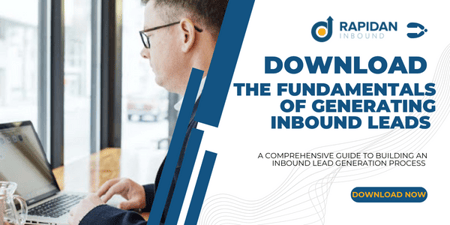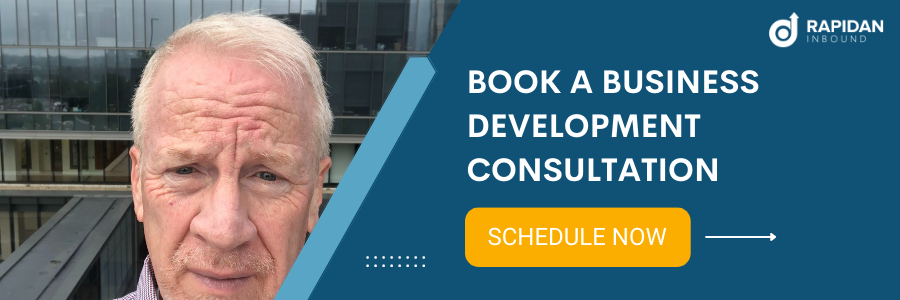10 Essential SMART Goals for Online Lead Generation

It's that time of year again. No, not the holiday season. I'm talking about revenue growth planning time for SMB companies. If you're selling the way your customers want to buy, you're probably using inbound marketing techniques for online lead generation. What kind of goals are you setting to hit your revenue goals?
Savvy business owners are using SMART goals to keep their growth strategies on track. SMART goals use a methodology to make them meaningful for business objectives and to monitor progress towards them. SMART goals are:
-
SPECIFIC. SMART goals are clear to everyone involved in achieving them. Rather than set a goal to increase sales, a SMART goal would be to increase sales by $500,000.
-
MEASURABLE. You need to be able to measure your SMART goals. Sales is something that is easily measurable. With inbound marketing software, most Key Performance Indicators are measurable. If you're trying to measure customer service, don't set a goal to improve customer service. Consider something like 90% of customers rating servicer as good or excellent on a customer service survey.
-
ATTAINABLE. SMART goals should be difficult to reach, but attainable. If your current annual sales are $100,000, increasing sales by $500,000 is most likely not attainable.
-
RELEVANT. SMART goals should be relevant to your business objectives. Clearly increasing sales by 25% is relevant to a business.
-
TIMELY. SMART goals need to be accomplished within a certain period of time. Increasing sales by $500,000 is not a SMART goal. Increasing sales by $500,000 by 12/31/2014 is a SMART goal.
Here are 10 essential SMART goals for online lead generation.
SMART goals to fill your inbound marketing funnel.
1. Website visitors fill the top of your inbound marketing sales funnel. Most website visitors aren't ready to buy when the first come to your website. However, you need to fill the top of your sales funnel so you can convert visitors to leads and move them down your sales funnel.
SAMPLE SMART GOAL: Increase website visitors to 2,000 per month by September 30, 2023.
2. Social media reach is the number of followers of your social media accounts. Your social media reach represents the potential size of the audience to consume your inbound marketing content.
SAMPLE SMART GOAL: Increase followers of our LinkedIn company page to 250 by the end of the 3d quarter in 2023.
3. Blog subscribers are the people who have opted in to be notified when you publish new blog posts by email or RSS feed. Blog subscribers are relevant because they not only are consumers of your marketing content, but they help your search engine rankings with Google.
SAMPLE SMART GOAL: Increase blog subscribers by 40% by September 30, 2023.
4. Social shares are when someone from your social media audience shares your marketing content with their followers. Social shares are relevant because they multiply the audience for your content and help with search engine optimization. A share of your content on social media is a signal to Google that it's good content.
SAMPLE SMART GOAL: Have our blog articles retweeted an average of 5 times for the six-month period ending September 30, 2023.
Note that these first 4 goals are designed to fill the top of your sales funnel. When designing your SMART goals, take into account past performance and/or benchmarks to make sure that they're attainable.
SMART goals to move website visitors through your inbound marketing sales funnel.
5. Leads are website visitors who have exchanged contact information in exchange for a premium content offer. Leads opt-in to your email marketing and provide an opportunity to convert them to customers. They also give you the first opportunity to qualify website visitors against your ideal customer profile.
SAMPLE SMART GOAL: Generate 30 inbound marketing leads per month by September 30, 2023.
6. Lead conversion ratio is the percentage of website visitors that convert to leads in a given time period. If you have a high lead conversion ratio, you need less website traffic to hit your lead goals. The lead conversion ratio is a good measure of the effectiveness of your inbound marketing.
SAMPLE SMART GOAL: Hit a lead conversion ratio of 2.5% by the end of the second quarter, 2023.
7. Email open rate is the percentage of people to whom you send marketing emails that open the email. The open rate is a good measure of how relevant your emails are to your audience.
SAMPLE SMART GOAL: Hit an email open rate of 35% by September 30, 2023.
8. Email clickthrough rate is the percentage of people to whom you send marketing emails that open the mail and click on the link included in the email. This is an indication that the recipient is interested in your marketing message.
SAMPLE SMART GOAL: Hit an email clickthrough rate of 10% by September 30, 2023.
SMART goals that drive top-line growth
9. Customers generated through inbound marketing are people who found your company through your website or social media networks and became customers. This is the ultimate measure of the effectiveness of your inbound marketing efforts.
SAMPLE SMART GOAL: Generate 10 customers from inbound marketing in 2023.
10. Customer conversion ratio by source is the percentage of your leads who became customers by the source (search engine, email marketing, social media, etc.) This measures the effectiveness of your inbound marketing more granularly and helps you identify your most effective marketing channels. This is useful in allocating resources to channels that produce the highest return.
SAMPLE SMART GOAL: Hit a customer conversion ratio of 3% for email marketing in 2023.
SMART goals are essential to your growth strategy. It's a good idea to set annual goals and then break them down to monthly or quarterly bites. This will help you make sure your on track to hit your annual goals. Review progress to your SMART goals monthly and make adjustments to your tactics based on marketplace feedback. The goals shown above are samples of some of the things you should be thinking about as you develop your online lead generation strategy.





